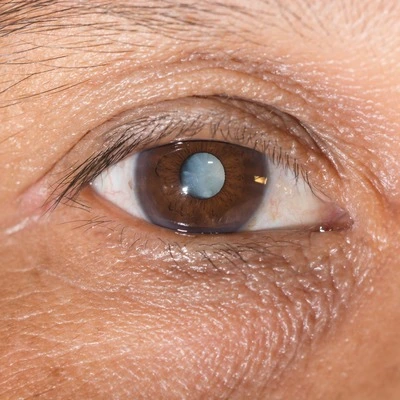Understand the causes of cataract, Cataracts are primarily caused by the natural aging process of the eye, exposure to ultraviolet light, certain medical conditions, and lifestyle factors. A cataract is any cloudiness or opacity of the natural lens of the eye, which leads to a decrease in vision. It is the most common cause of vision loss in people over age 40 and is also the principal cause of blindness in the world.
The lens is a clear part of the eye that helps to focus light, or an image, on the retina. The retina is the light-sensitive tissue at the back of the eye. In a normal eye, light passes through the transparent lens to the retina. Once it reaches the retina, light is changed into nerve signals that are sent to the brain. The lens must be clear for the retina to receive a sharp image. A cataract can prevent light from reaching the retina. It can also cause light rays to scatter as they pass through the cloudiness.

Causes of Cataract
The lens lies behind the iris and the pupil. It works much like a camera lens. It focuses light onto the retina at the back of the eye, where an image is recorded. The lens also adjusts the eye’s focus, letting us see things clearly both close and far away. The lens is made of mostly water and protein. The protein is arranged in a precise way that keeps the lens clear and lets light pass through it.
As age advances, some of the protein may clump together and start to cloud a small area of the lens. This is a cataract. Over time, the cataract may grow larger and cloud more of the lens, making it harder to see.
Based on the aetiology or cause of cataracts, they are divided into the following types:
Congenital Cataract: Cataracts in a child can be congenital (present at birth) or acquired (developed after birth. Approximately 50% of childhood cataracts are caused by mutations in genes that code for proteins involved in lens structure or clarity. Some of the cataracts present by birth are associated with syndromes such as Downs syndrome, and Turner syndrome. Congenital infections such as toxoplasma, rubella, cytomegalovirus, herpes, and syphilis (TORCH) are associated with congenital cataracts, with rubella being the most common. Other risk factors are malnutrition during pregnancy, maternal exposure to radiation, drug ingestion and birth trauma.
Senile Cataract: Also called ‘age-related cataract’, this is the commonest type of acquired cataract affecting equally persons of either sex usually above the age of 50 years. By the age of 70, over 90% of individuals develop senile cataracts. The condition is usually bilateral, but almost always one eye is affected earlier than the other. Besides advancing age, cataract risk factors include:
- Heredity. It plays a considerable role in the incidence, age of onset and maturation of senile cataract in different families.
- Ultraviolet irradiations. More exposure to UV irradiation from sunlight has been implicated in the early onset and maturation of senile cataracts in many epidemiological studies.
- Dietary factors. A diet is deficient in certain proteins, amino acids, vitamins (riboflavin, vitamin E, vitamin C), and essential elements has also been blamed for the early onset and maturation of senile cataracts.
- Smoking has also been reported to have some effect on the age of onset of senile cataracts. Smoking causes accumulation of pigmented molecules—3 hydroxykynurinine and chromophores, which lead to yellowing. Cyanates in smoke cause carbamylation and protein denaturation.
- Excessive alcohol consumption
- Obesity
- Hypertension
Traumatic Cataract: This type of cataract is formed following trauma. Trauma or any injury to the eye can lead to disruption of the lens leading to a type of cataract called a traumatic cataract. This can also be associated with any other injury involving a head injury.
Metabolic Cataract: Many systemic diseases like diabetes mellitus can cause cataracts or can accelerate the process of cataract formation. People with diabetes usually have cataracts at a younger age. Diabetic retinopathy is another concern in patients with diabetes. So regular eye check-up is a must in people with diabetes. Other types of metabolic cataracts are Glactosaemic cataracts, and cataracts due to the error of copper metabolism.
Complicated Cataract: It refers to the opacification of the lens secondary to some other intraocular disease. This could be because of high refractive power like pathological myopia, which can be a complication of inflammation of the eye called uveitis. Intraocular tumours such as retinoblastoma or melanoma may give rise to complicated cataracts in the late stages. Cataracts can form after surgery for other eye problems, such as glaucoma, and retinal detachment.
Radiation Cataract: X-rays, one form of ionizing radiation, may damage the DNA of lens cells. Ultraviolet light, specifically UVB, has also been shown to cause cataracts, and some evidence indicates sunglasses worn at an early age can slow its development in later life. Prolonged exposure (over several years) to infrared rays may cause cataracts. It is typically seen in persons working in glass industries.
Drug-induced cataracts: Some medications, such as systemic, topical, or inhaled corticosteroids, may increase the risk of cataract development. Corticosteroids most commonly cause posterior subcapsular cataracts. Other drugs associated with cataracts are miotics, amiodarone, chlorpromazine, busulphan, and allopurinol, statin medication used to reduce cholesterol, and hormone replacement therapy.
Systemic disorders associated with cataracts are
- Myotonic dystrophy is associated with the posterior subcapsular type of cataract.
- Atopic dermatitis is the most common cutaneous disease associated with cataracts (Atopic cataracts).








